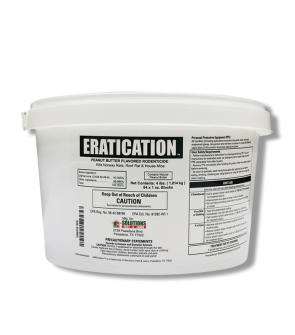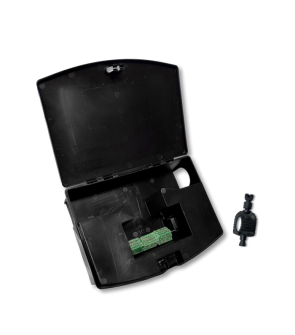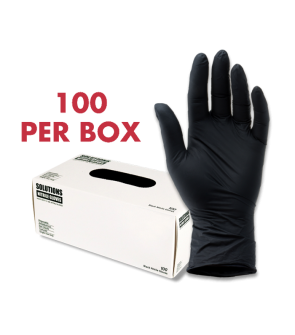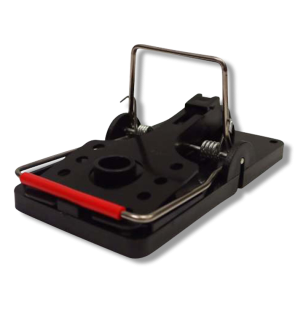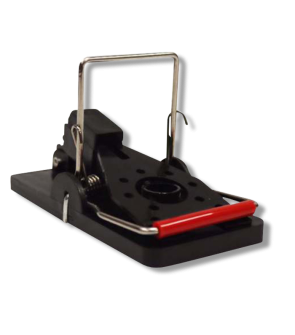Gain access to personalized product screening, the best pricing, rewards, and more!
Most Effective Products
Rodent Bait Troubleshooting Tips: Why Bait is Not Working
This page is a professional DIY guide explaining some of the common reasons why rats or mice avoid baits. Follow this article and the attached links to learn more about rodent behaviors, bait control methods, and effective products that guarantee complete rodent control.
By now, you are probably wondering why rats and mice are still scurrying around after eating the bait from your trap. These rodents are crafty creatures that associate anything new in their environment with immediate danger. Even more so if they can escape from a snap trap or eat rodenticide baits and live to tell about it.
Besides the problems of diseases, rapid breeding, food contamination, and potential fire hazards from chewing on electrical wiring, these rodents also possess the ability to become resistant to repeatedly used baits. For these reasons, many homeowners try baiting or look into different baiting methods.
Successful baiting involves more than simply setting peanut butter or rodent baits out. Our easy-to-use DIY guide will help you avoid these common bait mistakes with chemical or non-poisonous baits like peanut butter.
What Are Rodent Baits?

Depending on the manufacturer, these rodenticides may be called rat or mouse poison.
Non-chemical baits are not commonly referenced as "baits" in most industries and markets. Some common examples of non-chemical baits for rats and mice are peanut butter, chocolate cheese, dried meat, or dried fruit.
Why Rats or Mice Are Not Eating Baits
Contaminated Bait
Rodents have a keen sense of smell that is much stronger than that of people, which is why contaminated bait will deter them.
Conditions such as dust and moisture can make high-quality rodent bait become cheap and less effective. All too often, bait that becomes wet in storage, on snap traps, or in bait stations leads to mold growth.
If the bait becomes contaminated in any way, the rodent will not accept it well. After all, they do not like to consume food that is dirty, old, stale, musty, covered with other insects, or contaminated with insecticides, cleaning agents, or water.
Of equal importance is the possibility that the bait's expected performance may lessen if it becomes wet, moldy, dusty, or stale.
Scents
Older baits or those handled by people with their bare hands give poor control because rats and mice depend on their sense of smell.
If these rodents smell any human scent on the bait, stations, traps, or other nearby objects, they will often avoid the area for some time.
Other Available Food Sources
Most of the time, rats and mice forage for food. So, if there are other easily accessible food items, such as pet food, open trash cans, candy, fruits, garbage, or other edible items, they will stay away from baits.
Resistance to Chemicals
The constant use of certain chemical-based baits may result in rats and mice becoming resistant. This unwanted chemical resistance trait is passed on to the next generation by rodents who have consumed the bait and managed to breed before dying, thus reducing its effectiveness.
This resistance is commonly seen with first-generation anticoagulants, which work by preventing the blood from clotting. This allows most of the rodents to consume the bait and then perish.
Not Enough Bait
Rodents are not the pickiest eaters, but they still have their standards. If your chemical or non-chemical bait is not tempting enough, they may simply ignore it.
Insufficient bait placement is a frequent problem in bait stations or snap traps. If the bait is overdone, the rodents may be able to remove it easily from the trap without setting it off.
Likewise, not consistently checking the bait stations and replacing the bait with fresher ones will make it less attractive to rats and mice. Depending on the chemical bait, inaccurate results in death or possible resistance can also occur if you are not using the correct amount of material.
Not Positioned or Placed Correctly
Just like people, rats and mice are all about location. These rodents are cautious and have poor eyesight, which causes them to travel close to vertical surfaces like walls, baseboards, or underneath furniture.
Some homeowners place bait in an open area, such as the middle of a pantry shelf, or not against the side of a rodent travel pathway. As a result, the rodents are not comfortable enough to consume the bait and make contact with snap traps.
Fewer baiting points in the area they are infesting will minimize the potential for trapping or poisoning. Wide open spaces between each bait site can also reduce the odds of the rat or mouse making contact with the bait-filled device.
Poor Bait Quality
There is no such thing as a universal rodent bait, but the active ingredient, formulation, and quality will determine the success rate.
Typically, baits start to go bad after 3 days or sooner depending on the weather, moisture in the air, dust, and other environmental conditions.
Rats and mice may sample a new bait or sniff around it until they are comfortable enough to consume it. If the bait poison causes the rodents to become sick but not kill them, they will associate the food with illness, thus avoiding it altogether. This often happens when the anticoagulant in the bait is too low, or the rodent has not ingested enough of the material.
What Can You Do To Increase Rodent Bait Success
Pre-Bait
Pre-baiting for at least 3 to 7 days is a proven method for making snap traps and bait stations more attractive to rodents.
Since you are trying to get rats or mice to visit these rodent control products, you will need to use non-chemical bait like peanut butter. Due to its strong smell, this food source is extremely attractive to foraging rodents.
Peanut butter laced with seeds is a favorite of rats and mice. However, these rodents will have a hard time eating it without getting caught in the snap trap or staying within the bait station.
To pre-bait, place enough peanut butter with seeds on the traps or within the bait station. Then, set either of these rodent control products where you usually see rodents moving along.
A little bit of bait goes a long way, so avoid putting thick layers of peanut butter so that rodents can easily eat it without stepping into or onto a rodent control product. A pea-sized amount is enough to get the job done.
Be sure to replace the peanut butter daily to maximize the freshness of the peanut butter aroma and make the rodents more likely to visit the products you are using. If the peanut butter dries out, it will lose its scent, making it less appealing to rats and mice.
Identify the Rodent
Proper identification will greatly enhance your bait control efforts, as each rodent has its own behavior, nesting, or foraging patterns. Knowing which rodent is infesting your home will also determine which trap or rodenticide bait to use.
Example of the deer mouse as shown above.
The deer mouse is most commonly found outside of homes. Their bodies are usually 2 to 3 inches long with tails that add another 2 to 5 inches. The color varies from pale gray to brown, with a white belly. Let's not forget about their ears and black eyes, which are larger than house mice.
A physically reference of the house mouse can be seen above.
The house mouse is more common indoors. It is slightly smaller than the deer mouse, at 2.5 to 4 inches plus a 2 to 4 inch long tail. The top of the body is gray or light brown with a cream-colored belly. The ears are small and rounded, and the noses are pointed.
The Norway way can be seen above in the image.
Norway rats are larger than roof rats, with the adult Norway rat measuring about 16 inches long, including their hairless tail. They are among the largest of rodents that prefer to dig burrows on the ground level along foundations, under shrubbery, and piles of objects.
The Norway rat has a long yet blunt nose, small ears, and is gray to brown on top of its body with scattered black hairs. Its underbelly has a lighter coloration of gray to white.
For a physical reference of the roof rat, examine the image above.
Roof rats are smaller than Norway rats at 6 to 8 inches long with a 6 to 8-inch long hairless, scaly tail. This rodent gets it name from its tendency to find shelter in more elevated spaces such as trees, roofs, or attics. Its ears are larger than those of Norway rats and more prominent from their heads, whereas Norway rats are smaller and sit closer to their heads.
The roof rats' coloration has a gray or brown fur coloration on top of their bodies that intermixes with black. The underside of the rat may be gray, white, or black.
Read the Bait Label
Some people may think a rodent bait may solve all kinds of rat or mouse problems, but the truth is not every rodent is going to be on there. Another thing to take into consideration is whether it is a First-Generation or Second-Generation Rodent Poison.
First-Generation Anticoagulant Rodenticies (FGARs) are a type of multiple-feeding rodenticide bait that requires the rodent to consume the bait for several feedings to deliver a lethal dose. FGARs work by thinning the blood after the rodent has consumed it, ensuring they will die by internal bleeding later on. This allows most of the rat or mice population to eat the perish without becoming shy of the bait being used.
Most of the time, applicators become frustrated with this bait because it appears the rodents are eating the bait and surviving. In truth, they are more likely to die not far from the bait stations or possibly not have consumed enough of the bait material to perish right there within the bait station.
Second-Generation Anticoagulant Rodenticides (SGARs) are a type of rodenticide bait that kill rats and mice after a single feeding. They are normally used to control rodents that have become resistant to FGARs. The issue is the poison is more likely to stay within the dead rodent, which increases potential exposure to foraging wildlife or pets.
Be sure to follow the instructions on the bait label. The rebaiting interval and the amount to use for the infestation you are facing will determine the success rate.
Avoid Touching Rat Baits and Stations

As mentioned before, rats and mice depend on their smell, so they will avoid it if they detect you on or anywhere near the product being used.
This also applies whenever you replace the bait or remove dead rodents from the traps and stations.
Seal Other Possible Entry Points

Prevent this by sealing all cracks, crevices, gaps, voids, or other holes in the walls, baseboards, windows, or doors with caulk and copper mesh. Be sure to address any gaps around the plumbing, roof, and vents.
Larger voids may need to be repaired altogether. Spaces under doors leading to the garage, patio, or other outdoor spaces may need the door sweep or sills replaced.
Check The Bait Often

Check the bait at least once a day to keep it fresh and dry and dispose of any deceased pests or contaminated bait. In return, rodents will be more likely to gnaw on and visit the bait being used.
Place Where Rats or Mice Travel

Other signs to tell where rodents are visiting are looking for signs of feces, which will be a quarter of an inch long, similar to the size and shape of a grain of rice for deer and house mice. Their feces will be dark to light brown with a smooth appearance.
House mice feces will have a rounded end, whereas deer mice will be more pointed.
Norway rat droppings are 3/4 inches long with blunt ends, whereas roof rats are 1/2 inches long with pointed ends.
Rat droppings are pellet-shaped in appearance, much like mice, but just notably larger in size.
Other signs, such as gnaw marks, shredded materials, noises, or the sight of the actual rodent, should also be noted.
Place the snap traps or bait stations within these areas along the vertical surface. To control rodents, we recommend using snap traps indoors and bait stations outdoors.
A successful FGAR we recommend using is Eratication Rodent Bait, a synthetic rodenticide bait formulated with peanut butter and seeds.
While wearing gloves, load a tamper-proof bait station like the Solutions Rat and Mouse Bait Station with 2 to 8 Eratication bait blocks.
Close the bait station's lid until it snaps into place. Place the loaded bait stations along the walls and linear structure near the areas where you have noticed rodent activity.
Ensure the entrance holes to the bait station are facing against the structure. Set each bait station 15 to 20 feet apart.
Resupply the bait station with new Eratication bait blocks for at least 10 days for mice and 15 days for rats.
We recommend using the Solutions Easy Set Rat Trap for indoor rodent control or the Solutions Easy Set Mouse Trap. These durable plastic snap traps feature a built-in bait cup that ensures baits are less messy and a 90-degree angle, resulting in safer yet successful trapping.
Fill the Solutions Easy Set Trap's bait cup with peanut butter and seeds. After baiting the trap, push down on the arm bar until it locks into place.
Place the Solutions Easy Set Traps along the walls and linear structures in the areas where rodents are active. Make sure these areas are not easily accessible to children and pets.
Check the snap traps twice daily. To dispose of dead rodents in the snap trap, lean the trap forward and push down on the bar to disengage the lock.
Eliminate or Secure Other Food Sources
Generally, enclose all food items or other materials you usually store in a cardboard box in a sealable plastic container.
Once you set out a trap or bait station, consistently clean up that area.
Sweep any food residue, plant material, or trash from the bait area. Wipe off any liquid food material with a warm, wet rag. Avoid using cleaning chemicals as this can scare off the rodent.
Pick up any dead rats and mice immediately to further decrease bait shyness.
Key Takeaways
How Long Does Rodent Bait Take to Work?
- Depending on the bait, its active ingredients, formulation, and how much is consumed, the duration will determine the duration of rodent control.
Where Do Rats or Mice Go After Eating Baits
- After eating the bait, the rodent may perish within the station or in a secure area where other animals cannot reach them. Typically, this is within walls, underneath objects or structural foundations, or back to their nests.
Will A Dead Rodent Deter Others
- Yes and no. Some rodents may be curious and seek the source of the decaying odor protruding from the deceased animal. However, other rats and mice may associate the dead rodent with the bait, snap trap, or bait station, causing them to avoid the product altogether.














